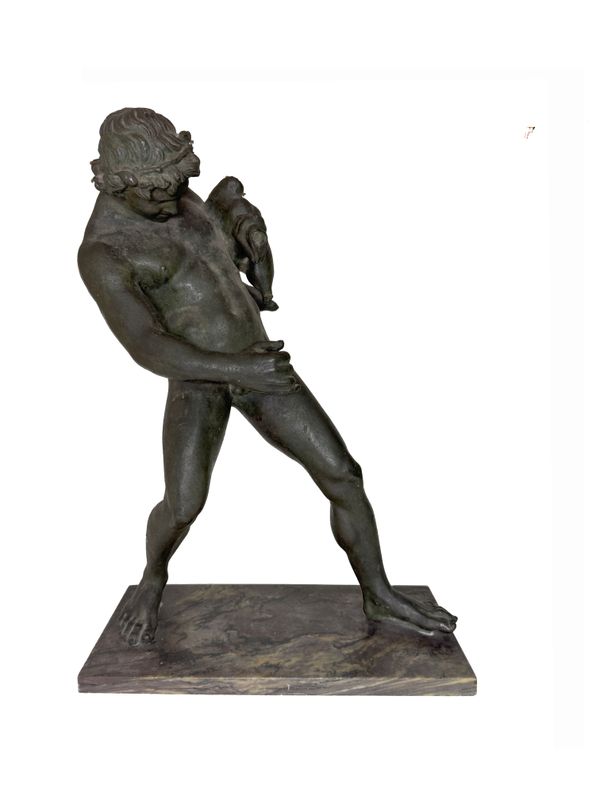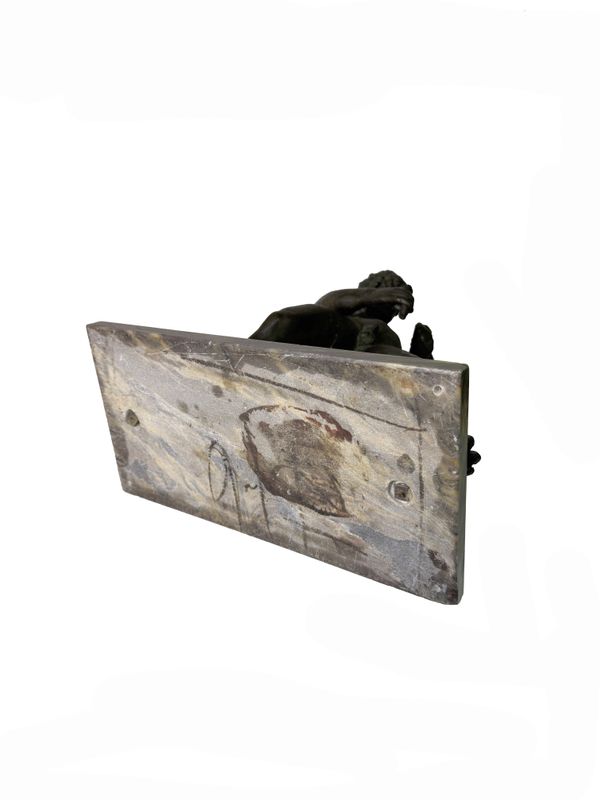OF GRAND TOUR INTEREST: AN ITALIAN BRONZE OF A FAUN WITH A WINE SACK AFTER THE ANTIQUE
Probably Neapolitan, Early 20th Century
On variegated marble base, 51cm high
| Estimate: | £300 - £500 |
| Hammer price: | £350 |
A comparable example is held in the National Trust’s collection at Anglesey Abbey, Cambridgeshire.
This model is after a bronze fountain figure dating to the late 2nd / early 1st BC, excavated at the House of the Centenary, Pompeii, in 1879. Wine (or water from the fountain) would have originally poured from the sack into a cup held by the Satyr (attendant to the god of wine, Bacchus). Like the Anglesey Abbey example, the cup is now missing.
Many bronze foundries operated in Naples from the late 18th into the 19th Century, making souvenirs of ancient figures for tourists, many of the anncient originals now held in the Museo Archeological National in Napes (Inv 111495)
This example or a very closely related figures is illustrated in the Chiurazzi catalogue, one of the busiest and most distinguished foundries at the turn of the early 20th Century. Bronzes could be finished in a choice of three patinas: Pompeii (green), Herculaneum (dark) and Renaissance (lustrous brown).
The Faun with a wineskin is one of the finest bronze figures to have been discovered at Pompeii. Today in the Museo Archeologico Nazionale in Naples (Inv. 111495, height 51 cm.; Stefano De Caro, ed., Il Museo Archeologico Nazionale di Napoli, Naples 1994, p. 206), the bronze figure was found in the House of the Centenary (Casa del Centenario, IX, 8, 3-6), discovered in 1879 and given its name to mark the 18th centenary of the eruption of Vesuvius in A.D. 1879, that buried Pompeii and Herculaneum. The fountain figure was found during the first excavations of the house in 1879. Datable to the late second or early first century B.C. and an excellent example of Hellenistic style, it was found standing on a small tufa base in the middle of the rounded part of the north edge of the house’s bathing pool. Water would originally have poured from the mouth of the wineskin into a cup that the satyr was holding in his right hand.


